
The full picture can change everything.
From first scan to final decision, every moment in cardiac care matters. That’s why we are building a smarter and more unified suite of cardiac solutions built to support you across every moment of care.
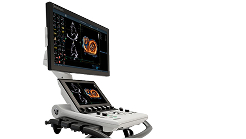
Vivid™ Cardiovascular Ultrasound
Elevate your clinical capabilities and patient care with Vivid™ systems' extraordinary imaging technology and AI-powered tools. Improve your diagnostic confidence and workflow productivity.
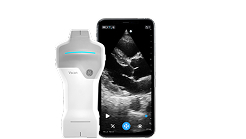
Vscan Air™ SL with Caption AI™
Optimized for rapid cardiac assessments at the point of care. Equipped with M-mode, Pulsed Wave Doppler and AI- powered cardiac guidance.
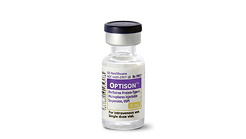
Contrast imaging
Optison™ (Perflutren Protein-Type A Microspheres Injectable Suspension, USP) enhances cardiac visualization when it mattes the most. The only PEG-free ultrasound-enhancing agent approved in the U.S. for adult and pediatric use. Optison delivers consistent, high-quality images with safety, simplicity and confidence in every vial. For important safety information, including box warning, see below.*
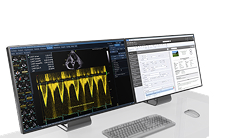
Post-processing and reporting solutions
Turn data into confident decisions. EchoPAC™, Centricity™ Cardio Enterprise or ViewPoint™ 6 offer flexible tools to streamline documentation, analysis and reporting. Plus, gain access to vendor-agnostic post-processing, including tools like TomTec™ Arena.
Echo Education Hub
Friday, September 5 | 1:45–3:45 p.m.
Saturday, September 6 | 10:30 a.m.–5:00 p.m.
Sunday, September 7 | 8:30 a.m.–12:15 p.m.
Hub 223
Dive into cardiac ultrasound imaging with sessions that explore the latest in 4D imaging, advancements for TEER and LAAO procedures, AI-powered tools, and advanced strain analysis techniques.
Learn from top experts, gain hands-on experience and discover how the latest innovations are transforming patient care.
Education Hub Presenters
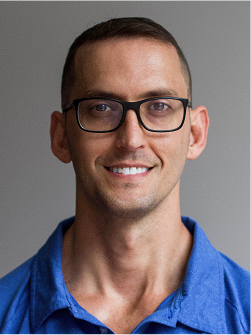
Jacob Dewees RDCS
Clinical Luminary Leader, GE HealthCare, CVUS
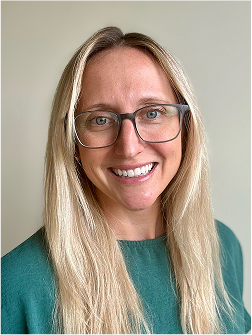
Jessica Stout BS, ACS, RDCS, FASE
Beth Israel Deaconess Medical Center, Boston
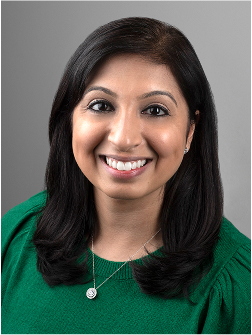
Kiran Belani, MD, FASE, FACC
Northwestern Medicine, Chicago

Paaladinesh Thavendiranathan, MD
University of Toronto, Canada
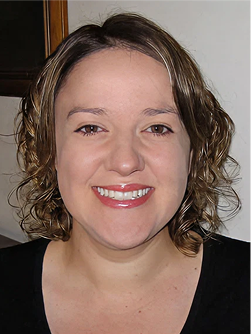
Rebecca Perry MD, PhD
University of South Australia, Adelaide
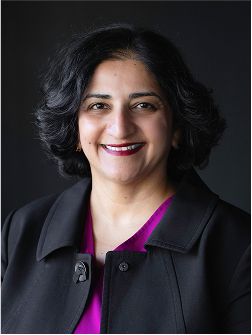
Renuka Jain MD, FACC
Aurora St. Luke's Medical Center, Milwaukee, WI
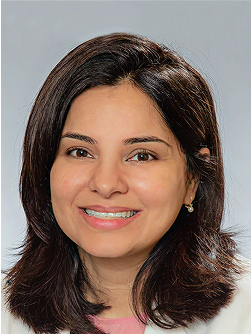
Salima Qamruddin MD, MPH, FASE
Ochsner Heart and Vascular Institute, New Orleans
Education Hub Schedule
Friday, September 5
Exciting Developments in Vivid™ Technology
1:45–2:30 p.m.
Experience the latest Vivid technologies featuring advanced image quality, color flow imaging, artificial intelligence capabilities and 4D quantification through hands-on practice with cutting-edge EchoPAC systems.
Speaker: Jacob Dewees, RDCS
Hands-on lead: Charles Polosky, RDCS
How Artificial Intelligence Can Transform Your Echo Lab
3:00–3:45 p.m.
Discover comprehensive artificial intelligence tools for echocardiography including view recognition, automated measurements, acquisition guidance and offline analysis to enhance lab efficiency through hands-on EchoPAC applications.
Speaker: Rebecca Perry MD, PhD
Saturday, September 6
Bringing AFI Myocardial Strain into Your Echo Lab
10:30–11:30 a.m.
Master strain measurement techniques and AI-enhanced analysis through clinical case studies, proper methodology training, result interpretation, and hands-on practice with the latest EchoPAC technology.
Speaker: Salima Qamruddin MD, MPH, FASE
Hands-on lead: Charles Polosky, RDCS
Elevating Left Atrial Appendage Closures with 4D Imaging and AI
1:00–2:00 p.m.
Master left atrial appendage occlusion (LAAO) procedures through understanding key imaging angles, measurements and AI-enhanced workflows using hands-on 4D TEE and 4D ICE datasets with Flexi-slice (multiplanar formatting).
Speaker: Kiran Belani MD, FASE, FACC
The Productive Echo Lab: Using AI and Vivid Technologies to Improve Workflow
2:30–3:30 p.m.
Discover comprehensive artificial intelligence tools for echocardiography including view recognition, automated measurements, acquisition guidance, and offline analysis to enhance lab efficiency through hands-on EchoPAC applications.
Speaker: Jessica Stout, RDCS
The Value of Strain (AFI) in Cardio-oncology
4:00–5:00 p.m.
Learn how our AI driven strain analysis (AFI) can detect cardiac toxicity in patients undergoing treatments through hands-on assessment of pre- and post-chemotherapy cases in cardio-oncology.
Speaker: Paaladinesh Thavendiranathan MD
Sunday, September 7
AFI Strain in Cardiomyopathies, Amyloid and Ischemic Heart Disease
8:30–9:30 a.m.
Explore how ischemia, amyloid and other cardiomyopathies effect cardiac function. Understand the strain patterns associated with these diseases through hands-on case study review using EchoPAC.
Speaker: Salima Qamruddin MD, MPH, FASE
Hands-on lead: Charles Polosky, RDCS
4D Imaging for Structural Heart Procedures
and Real-Time Guidance
10:00–11:00 a.m.
Discover the critical role of 4D echo in structural heart procedures through hands-on learning of anatomical orientations, flexi-slice techniques (MPR) for mitral and tricuspid valve repairs using EchoPAC datasets.
Speaker: Renuka Jain MD, FACC
The 4th Dimension: Optimizing 4D Images and
4D Quantification
11:30 a.m.–12:15 p.m.
Learn to optimize, navigate, and quantify 4D volumes while understanding the relationships between image resolution, frame rate, and volume size through hands-on practice with our 4D automated quantification tools.
Speaker: Jessica Stout, RDCS
Science and Tech Theater
Sunday, September 7 | 12:30–1:30 p.m.
Science and Tech Theater 1
Includes catered lunch
Popular event—arrive early to secure your seat
Join leading experts for a panel discussion around the latest breakthrough in echocardiography. Hear how this technology will deliver clearer, more reliable insights that empower better clinical decisions.
With enhanced image clarity and performance this innovation not only elevates the care your patients receive but also transforms your user experience.
Host
Rhonda Hudson, MS, RDCS
Global Clinical Director CVUS, GE HealthCare
Panel
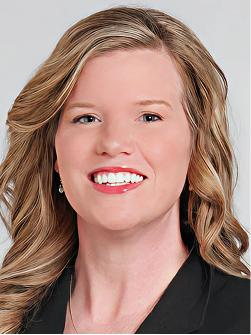
Amy Dillenbeck MS, ACS, RDCS, FASE
Cleveland Clinic, Cleveland, Ohio

Luigi Badano MD, PhD
University of Milano-Bicocca, Milan, Italy

Pei-ni Jone MD
Lurie Children’s Hospital of Chicago
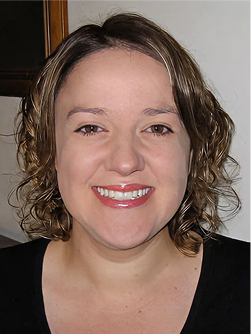
Rebecca Perry MD, PhD
University of South Australia, Adelaide, Australia
At GE HealthCare, we're at the heart of it all. Because it's not about working harder—it's about tools that work as hard as you do.
See you at ASE 2025!
OPTISON (Perflutren Protein-Type A Microspheres Injectable Suspension, USP)
INDICATIONS:
OPTISON is an ultrasound contrast agent indicated for use in adult and pediatric patients with suboptimal echocardiogram to opacify to the left ventricle to improve the delineation of the left ventricle endocardial borders.
WARNING: SERIOUS CARDIOPULMONARY REACTIONS Serious cardiopulmonary reactions, including fatalities, have occurred uncommonly during or following perflutren-containing microsphere administration. Most serious reactions occur within 30 minutes of administration
- Assess all patients for the presence of any condition that precludes OPTISON administration
- Always have resuscitation equipment and trained personnel readily available
CONTRAINDICATIONS:
OPTISON is contraindicated in patients with known or suspected hypersensitivity to perflutren or albumin.
WARNINGS AND PRECAUTIONS:
- Serious cardiopulmonary reactions including fatalities have occurred uncommonly during or shortly following perflutren-containing microsphere administration, typically within 30 minutes of administration. The risk for these reactions may be increased among patients with unstable cardiopulmonary conditions (acute myocardial infarction, acute coronary artery syndromes, worsening or unstable congestive heart failure, or serious ventricular arrhythmias).
- Serious anaphylactic reactions have been observed during or shortly following perflutren-containing microsphere administration, including shock, hypersensitivity, bronchospasm, throat tightness, angioedema, edema (pharyngeal, palatal, mouth, peripheral, localized), swelling (face, eye, lip, tongue, upper airway), facial hypoesthesia, rash, urticaria, pruritus, flushing, and erythema have occurred in patients with no prior exposure to perflutren-containing microsphere products.
- When administering OPTISON to patients with a cardiac shunt, microspheres can bypass filtering of the lungs and enter the arterial circulation. Assess patients with shunts for embolic phenomena following OPTISON administration. OPTISON is only for intravenous administration; do not administer OPTISON by intra-arterial injection.
- High ultrasound mechanical index values may cause microsphere rupture and lead to ventricular arrhythmias. Additionally, end-systolic triggering with high mechanical indices has been reported to cause ventricular arrhythmias. OPTISON is not recommended for use at mechanical indices greater than 0.8.
Adverse Reactions
Common adverse reactions (incidence > 0.5%) were: headache, nausea and/or vomiting, warm sensation or flushing, dizziness, dysgeusia, chills or fever, flu-like symptoms, malaise/weakness/fatigue, chest pain, dyspnea, injection site discomfort, and erythema. Cardiac arrests and other serious but nonfatal adverse reactions were uncommonly reported in post-approval use. Reports also identified neurologic reactions (loss of consciousness or convulsions) as well as anaphylactoid reactions. Overall, the safety profile observed in pediatric patients from the clinical study was consistent with the safety profile in adult patients.
Use in Specific Populations
Pregnancy and Lactation:
There are no data with OPTISON use in pregnant woman to inform any drug-associated risks.
There are no data on the presence of perflutren protein-type A microspheres in human milk, the effects on the breastfed infant or the effects on milk production.
Pediatric Use
Safety and efficacy of OPTISON in pediatric patient is supported by evidence from adequate and well-controlled studies in adults and additional efficacy and safety data from a clinical study in 37 pediatric patients aged 9-17 years.
Geriatric Use
No overall differences in safety or effectiveness were observed in patients 65 years and over but a greater sensitivity to OPTISON in older individuals cannot be ruled out.
Please see the full Prescribing Information, including Boxed Warning for additional important safety information.
To report SUSPECTED ADVERSE REACTIONS, contact GE HealthCare at 800 654 0118 (option 2 then option 1) or by email at [email protected] or FDA at 800 FDA 1088 or www.fda.gov/medwatch
*Optison ("Drug”) and the Devices shown above ("Device") are NOT Combination Products as classified under 21 CFR 3.2(e). Both Drug & Device were approved/cleared independent of the other by the FDA. While the products can be used in conjunction with each other, Drug does not require the use of this specific Device, nor does Device require the use of this specific Drug.
JB03144XU
JB12220US | August 2025

GE HealthCare | Privacy Policy | Terms of Use | Contact Us
Compliance | California Privacy Policy | Security
California Transparency in Supply Chain Act | Adverse Event Reporting
500 W. Monroe Street | Chicago, IL 60661
© 2025 GE HealthCare. All rights reserved. GE and the GE Monogram are trademarks of General Electric Company used under trademark license.